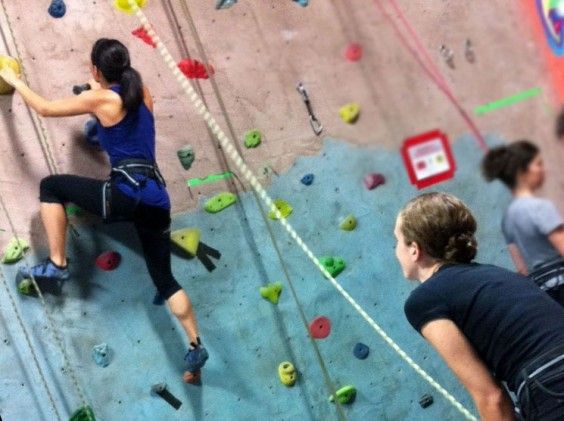Rock climbing isn’t just relegated to dare devils and action movie stars. There are real world ways to climb both in the gym or outside, and some types of rock climbing are even beginner friendly.
Off the Wall — The Need-to-Know
Spawned from the basic human desire to be where it’s nearly impossible to get (ever play king of the mountain?),rock climbing was originally a practical way to hoof it from sea level to mountaintop, pre-planes, trains, and automobiles. The first recreational mountain climb is believed to have been to the summit of Mont Blanc (the mountain, not the pen) in 1786. From there, the sport has grown in popularity, with developments of various style in the mid-20th century and the first indoor gyms springing up in the U.S. during the 1980s and ‘90s.
There are a mountain of different rock climbing styles, including bouldering, indoor, free rock, traditional, solo, and alpine. Indoor climbers summit on manmade walls, whereas free climbing and traditional— or trad— climbing takes place in the great outdoors. And while trad climbers use safety equipment, they don’t rely on the equipment to assist with the climb itself (other types of outdoor climbing use ropes and harnesses to help support body weight). Free climbing is considered “sport” climbing and uses pre-drilled bolts attached to safety equipment, while trad climbing relies on grips the climber temporarily attaches to the rock itself. Trad climbing is considered a more advanced form and is usually not a first-timer’s friend.
Rock Out — Your Action Plan
Rock climbing provides a heart-pumping aerobic workout with a hefty dose of strength training
To climb recreationally, hopeful beginners need to be generally fit (no world record pull-up skills required)
To ensure a safe climb, always re-check ropes, knots, and harnesses, and discuss communication and commands with partners before heading upward. Outdoors, weather and rock stability also play a part in the safety of the climb. So for beginners, it’s best to start in a climbing gym or climb with an instructor certified by organizations like AMGA or PCGI.
Beginners’ Tips
Some beginners’ tips from Stephen Merritt, Manager and Climbing Pro, Brooklyn Boulders:
- Climbing is a sport that’s all about challenging yourself, so it’s always going to be somewhat difficult. It’s about setting yourself a challenge and figuring out how you get it done.
- People often think you need tons of upper body strength, but climbing is really about using your whole body, your legs and core included. The positions you put your body in have a huge impact on success; it’s similar to yoga in the importance of poses and postures.
- Another thing that’s really important even for beginners is a good pair of climbing shoes. The soles are a sticky rubber and fit your feet tightly so that you can use your toes precisely on small footholds.
- You always need to get trained by a qualified person. For outdoor climbing, you can hire a guide your first time; look for someone certified by the American Mountain Guide Association (AMGA). When indoor climbing, look for a gym that takes safety seriously. They should teach belaying to new climbers or require a belay test for climbers new to their gym. Climbing is very safe when done properly, but it’s easy to hurt yourself if you rely on the web for all your training.
- In terms of having a good experience at a gym, you want to find one that changes the routes frequently and has good route setters.

